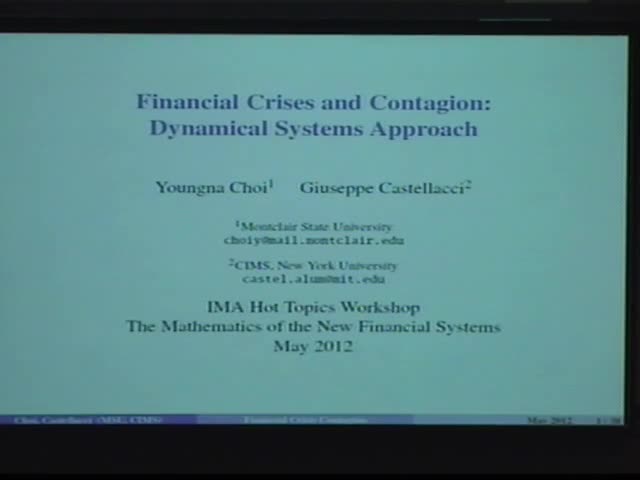Financial Crises and Contagion: dynamical systems approach
Presenter
May 18, 2012
Keywords:
- Dynamical systems approach
MSC:
- 76F20
Abstract
We build a multi-agent economic model as a dynamical system on a compact set, and show that the market instability is closely related to the leverage. The higher the leverage the greater the reaction of market participants to changes in their wealth. This gives rise to a bifurcation mechanism, and eventually a strong dynamical instability in capital markets which is commonly referred as financial crisis.
We divide an economy into finitely many aggregates called economic “agents,” and build a deterministic dynamical system of their wealth. We introduce a market instability indicator whose size is proportional to the instability level of the financial market, and provide conditions under which a local financial crisis propagates throughout the system to become a global one, creating systemic risk.
We extend the one-economy model to multiple economies to build a global multi-agent model, and provide a quantitative definition of “contagion.” We compare three financial crises, the 1997-98 Asian-Russian crisis, 2007-2009+ US subprime crisis, and the current eurozone sovereign credit crisis, as case studies of our research.
